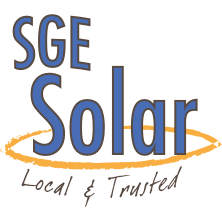U.S. Solar Will Eclipse Wind in 2013, Says Duke Energy
The U.S. will add more solar power in 2013 than wind energy for the first time as wind projects slump and cheap panels spur demand for photovoltaic systems, according to the head of Duke Energy Corp. (DUK)’s renewable-energy development unit.
The U.S. may install 3 gigawatts to 4 gigawatts of wind turbines this year, and solar projects will probably exceed that, said Gregory Wolf, president of Duke Energy Renewables. The U.S. added 13.1 gigawatts of wind power last year, beating natural gas for the first time.
U.S. wind projects have come to a near-standstill this year on uncertainty over the fate of a federal tax credit that was set to expire Dec. 31. Wolf anticipates more solar projects going into operation in 2013 than wind farms after panel prices fell more than 60 percent in the last two years.
“I would expect a lot of momentum still on solar,” Wolf said in an interview yesterday.
“We really ramped up our solar in 2010,” said Wolf. “Today most of the projects are half or less of the cost now than then.” Duke Renewables’ portfolio of renewable-energy projects exceeds 1.7 gigawatts.
The production tax credit, which provides 2.2 cents a kilowatt-hour for electricity from wind farms, was extended for a year on Jan. 1. With little information about whether it would be renewed, developers raced to complete wind farms by the end of last year and didn’t plan new ones.
The U.S. installed about 3.2 gigawatts of solar power last year and may reach 3.9 gigawatts this year, according to data compiled by Bloomberg. Cheap panels and lower construction costs have been aided by policy support that “has been a little more consistent and long-term,” Wolf said.
‘Green Halo’
Duke invested more than its $500 million target in renewable energy last year, and more than $2.5 billion to date, Wolf said.
“We’re not in this business just because we want a green halo for Duke,” he said.
The largest U.S. utility owner by market value enters into long-term power purchase agreements for wind and solar plants that have “an attractive profile in terms of risk and returns,” Wolf said. “If we find really good projects, we’ll see if we can find a way to make them work.”
